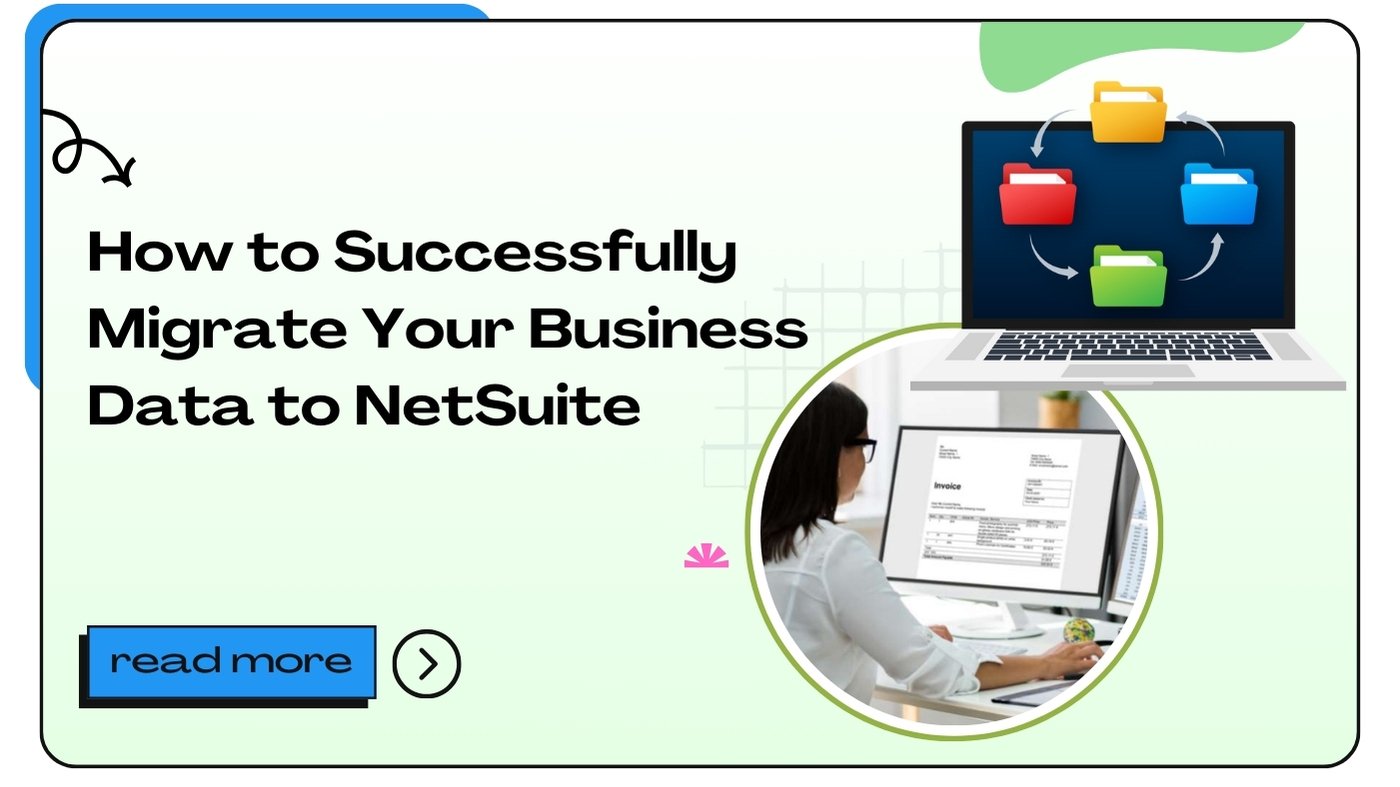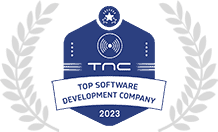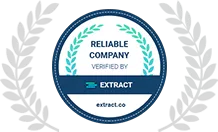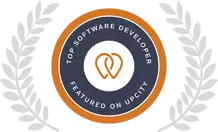Migrating your business data to NetSuite can seem like a daunting task. However, with proper planning and execution, this transition can be streamlined to enhance operational efficiency and provide significant benefits to your organization. NetSuite is a cloud-based Enterprise Resource Planning (ERP) system that integrates various business functions into a single platform, making it an ideal choice for businesses looking to modernize their operations.
Why Migrate to NetSuite?
The decision to migrate to NetSuite often stems from the need for better data management, improved scalability, and enhanced functionality. Here are some compelling reasons for the migration:
- Unified Platform: NetSuite integrates finance, CRM, e-commerce, inventory, and more into a single system, reducing the need for multiple software solutions.
- Real-Time Data: Access to real-time data analytics helps in making informed business decisions, improving responsiveness to market changes.
- Scalability: As your business grows, NetSuite can easily scale to accommodate additional users and functionalities.
- Cloud Accessibility: Being cloud-based means you can access your data from anywhere, facilitating remote work and collaboration.
- Automation: Streamlining processes through automation minimizes human error and increases productivity.
With these advantages, it becomes clear why many businesses are transitioning to NetSuite. However, to reap these benefits, you must approach the migration process strategically.
Planning Your Migration Process
Define Objectives and Scope
Before diving into the technical aspects of migration, it’s crucial to define your objectives and the scope of the project. Understanding what you want to achieve will guide your decisions throughout the process.
Steps to Define Objectives:
- Identify Key Pain Points: Understand the limitations of your current system and what you hope to improve by migrating to NetSuite.
- Set Clear Goals: Whether it’s enhancing reporting capabilities, improving customer management, or increasing operational efficiency, having clear goals will help align your team.
- Scope of Migration: Determine which data sets and functions will be included in the migration. This could range from financial data to inventory management systems.
Assemble Your Team
A successful migration requires a dedicated team that understands both the technical aspects of NetSuite and the business processes involved. This team typically includes:
- Project Manager: Oversees the migration process, ensuring timelines and objectives are met.
- IT Specialists: Handles the technical aspects of the migration, including data extraction, transformation, and loading (ETL).
- Business Analysts: Provides insights into business requirements and ensures the system meets organizational needs.
- Training Coordinators: Develops training materials and resources for end-users to ensure they are comfortable with the new system.
Conduct a Data Audit
Before migration, conducting a thorough audit of your existing data is crucial. This audit helps identify what data is valuable, what should be archived, and what can be discarded.
Steps for a Successful Data Audit:
- Inventory Data: List all the data types currently stored, such as customer information, financial records, and inventory lists.
- Assess Data Quality: Check for duplicate records, inaccuracies, and outdated information that may need cleaning before migration.
- Determine Relevance: Evaluate which data is necessary for the new system and which data can be archived or eliminated.
Create a Migration Plan
Once your objectives are defined, your team is assembled, and data is audited, it’s time to create a detailed migration plan. This plan should outline the timeline, resources, and specific steps involved in the migration process.
Components of a Migration Plan:
- Timeline: Establish a realistic timeline for each phase of the migration, from planning and data cleaning to testing and training.
- Budget: Determine the budget for the migration project, including costs for software, training, and potential downtime.
- Risk Management: Identify potential risks associated with migration and develop strategies to mitigate them.
Preparing for Data Migration
Choose the Right Migration Method
Selecting the appropriate method for migrating your data to NetSuite is crucial. The two most common methods are:
- Big Bang Migration: This method involves migrating all data at once. It’s often quicker but carries higher risks, as any errors can impact the entire system.
- Phased Migration: This approach involves migrating data in stages, allowing for testing and adjustments along the way. While it takes longer, it reduces risks and allows for easier troubleshooting.
Data Cleaning and Transformation
Before migrating, it’s essential to clean and transform your data to ensure it meets the requirements of the NetSuite system. This process often includes:
- Removing Duplicates: Eliminate duplicate entries to maintain data integrity.
- Standardizing Formats: Ensure all data is in a consistent format, making it easier to upload into NetSuite.
- Mapping Fields: Create a mapping document that outlines how data fields in your current system correspond to fields in NetSuite.
Data Backup
Before starting the migration, create a comprehensive backup of all existing data. This backup serves as a safety net in case something goes wrong during the migration process.
Steps for Effective Data Backup:
- Full Backup: Conduct a full backup of all databases, including customer information, financial data, and transaction records.
- Verify Backup Integrity: Ensure the backup is complete and that data can be restored if necessary.
- Store Backup Securely: Keep the backup in a secure location, either on-site or in a cloud environment, to ensure data safety.
Executing the Migration Process
Data Migration Execution
With a solid plan in place and all preparations completed, you can proceed to execute the migration. This phase involves the actual transfer of data from your existing system to NetSuite.
Steps for Successful Data Migration:
- ETL Process: Use the ETL (Extract, Transform, Load) process to extract data from your old system, transform it to fit NetSuite’s requirements, and load it into the new system.
- Monitoring: Continuously monitor the migration process to identify any issues that arise in real time.
- Testing During Migration: Run tests during the migration to ensure that data is being transferred correctly and to identify any discrepancies early on.
Post-Migration Testing and Validation
After the data has been successfully migrated, thorough testing is essential to validate that everything has transferred correctly.
Key Testing Steps:
- Data Integrity Check: Compare the data in NetSuite with your original data to ensure accuracy.
- Functionality Testing: Test all business processes that will be using the migrated data to confirm that they function as expected.
- User Acceptance Testing (UAT): Involve end-users to test the new system and provide feedback on its usability and functionality.
Training Users on the New System
Once the migration and testing are complete, it’s time to train users on how to navigate and utilize NetSuite effectively. Proper training is vital to ensuring a smooth transition and maximizing the benefits of the new system.
Training Strategies:
- Develop Training Materials: Create user manuals, quick reference guides, and video tutorials to assist users in learning the new system.
- Hands-On Training Sessions: Conduct interactive training sessions where users can practice using the system in a controlled environment.
- Ongoing Support: Establish a support channel for users to ask questions and seek help as they adapt to the new system.
Post-Migration Best Practices
Regular Monitoring and Maintenance
After the migration, regular monitoring and maintenance are critical to ensuring the continued success of your NetSuite implementation.
Monitoring Practices:
- Performance Metrics: Regularly review performance metrics to identify any areas for improvement.
- User Feedback: Collect ongoing feedback from users to identify issues and areas where additional training may be needed.
- System Updates: Stay up to date with NetSuite’s updates and enhancements to ensure your organization is leveraging the latest features.
Continuous Improvement
Embrace a culture of continuous improvement by regularly evaluating your processes and systems. This approach ensures that you are making the most out of your NetSuite implementation.
Strategies for Continuous Improvement:
- Review Business Processes: Regularly assess your business processes to identify inefficiencies and areas for enhancement.
- Leverage Data Analytics: Use NetSuite’s reporting and analytics features to gain insights into performance and make informed decisions.
- Invest in Further Training: Consider periodic training sessions for users to keep them informed of new features and best practices.
20 Unique FAQs About Migrating Business Data to NetSuite
- What is NetSuite?
NetSuite is a cloud-based ERP system that integrates various business processes, including finance, CRM, and inventory management. - Why should I migrate to NetSuite?
Businesses migrate to NetSuite for its unified platform, real-time data access, scalability, and automation features. - What is the first step in migrating to NetSuite?
The first step is to define your objectives and the scope of the migration project. - How do I conduct a data audit?
A data audit involves inventorying your data, assessing its quality, and determining its relevance for the new system. - What are the migration methods?
The two primary methods are Big Bang Migration (all data at once) and Phased Migration (data transferred in stages). - Why is data cleaning important before migration?
Data cleaning ensures that only accurate and relevant data is transferred, preventing issues in the new system. - How do I back up my data before migration?
Conduct a full backup of all databases and verify the integrity of the backup to ensure data safety. - What is the ETL process?
ETL stands for Extract, Transform, Load, and it’s the process used to move data from your old system to NetSuite. - What should I test after migration?
Test for data integrity, functionality of business processes, and conduct User Acceptance Testing (UAT) with end-users. - How do I train users on NetSuite?
Develop training materials and conduct hands-on training sessions for users to familiarize them with the new system. - What are best practices for post-migration?
Regular monitoring, continuous improvement, and user feedback collection are essential for post-migration success. - How often should I review my business processes?
Regular reviews, ideally at least annually, can help identify inefficiencies and areas for improvement. - Can NetSuite handle multiple currencies?
Yes, NetSuite supports multi-currency transactions and reporting, making it suitable for global businesses. - What should I do if I encounter issues during migration?
Consult with your migration team or seek assistance from NetSuite support to resolve any issues promptly. - Is it necessary to customize NetSuite?
Customization is not always necessary, but it can enhance functionality to better suit your business needs. - What are the risks of migrating to NetSuite?
Risks include data loss, downtime, and user resistance to change, which can be mitigated with careful planning. - How can I ensure data security during migration?
Implement encryption and access controls, and ensure that all data backups are stored securely. - What types of data can be migrated to NetSuite?
You can migrate financial data, customer records, inventory information, and operational data to NetSuite. - How can I measure the success of my migration?
Success can be measured by user satisfaction, system performance, and the achievement of your defined migration goals. - Can I migrate to NetSuite on my own?
While it’s possible, engaging with NetSuite partners or consultants is recommended for a smoother migration process.
- How to Optimize Inventory Management with NetSuite - October 4, 2024
- Best Practices for Customizing NetSuite to Meet Business Needs - October 4, 2024
- How to Successfully Migrate Your Business Data to NetSuite - October 4, 2024




















